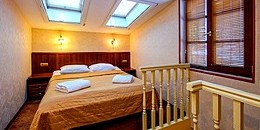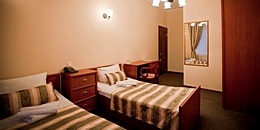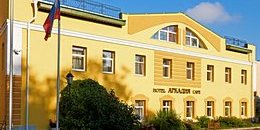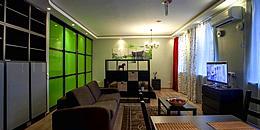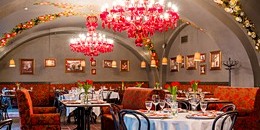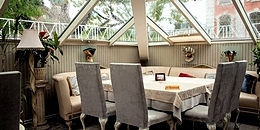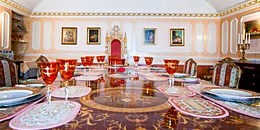Moyka River
This small winding stream that today runs through the very heart of St. Petersburg was the first the boundary of the young city in the beginning of the 18th century. After the establishment of the Summer Garden, Lebyazhy Canal was dug to the Neva River, and the Moyka was diverted to join the Fontanka River. The result was an artificial island between the Fontanka, Moyka, Lebyaznaya Canal, and the Neva officially called the Summer Garden Island.
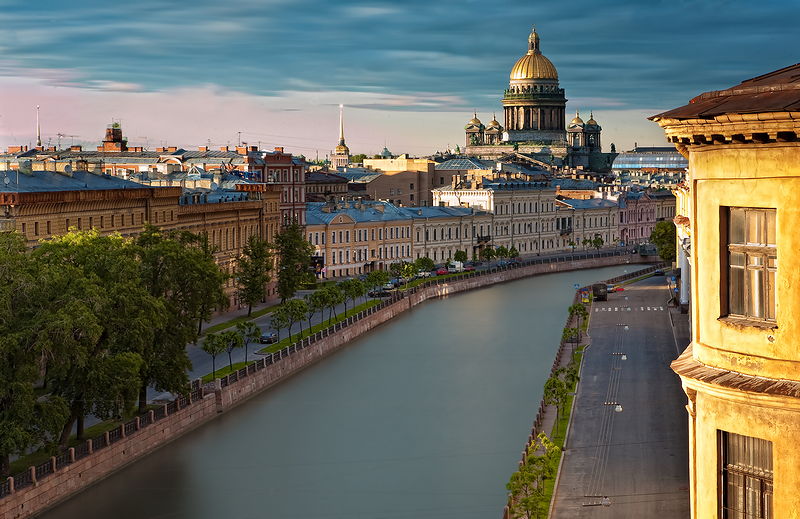
The development of neighborhoods along the river began in the 1720s. At the same time the first wooden embankments were constructed which were replaced by granite during the late 18th and early 19th centuries. One of the first major structures on the banks of the Moyka was the Court Stables. It was constructed in 1723 by architect Nicholas Gerbel. This building is about 250 meters long and its facade is decorated with 22 Doric columns. On February 1, 1837, Alexander Pushkin's funeral was held at the church of the Court Stables, located in the central part of the building.
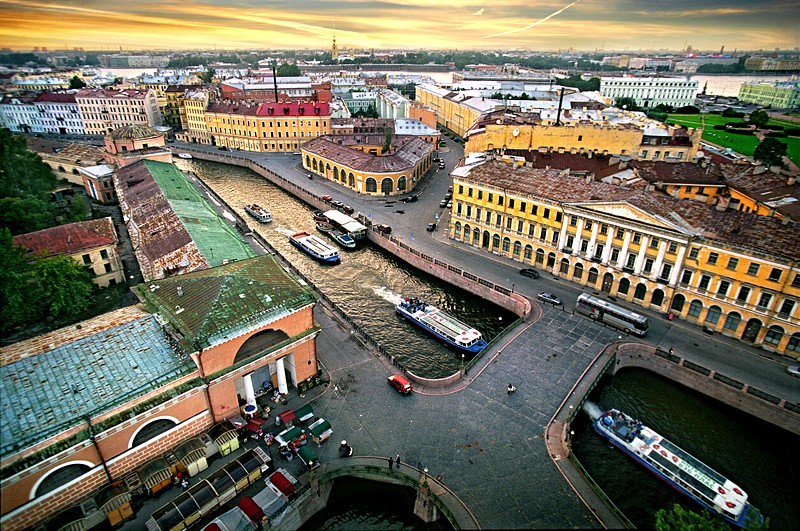
Pushkin's name is associated with several addresses on the Moyka. Pushkin often stayed at the Hotel Demouth (No. 40). The recently revived Wolf and Beranger patisserie is located on the corner of Nevsky Prospekt and the Moyka Embankment, and it was from there that Pushkin set off for his ill-fated duel with Georges Dantes. The House of Princess Volkonskaya (No. 12) is where Puskin spent the last months of his life in rented apartments which now house a museum in his name.
Also of interest is No. 20, home to the Glinka State Academic Kapella, now one of St. Petersburg's leading concert halls. The beautiful building, constructed in an ecletic mix of baroque and neoclassical styles around a cour d'honneur, was constructed 1887-1889 by the renowned architect and critic Leon Benois. Its ornate concert hall is famous for its excellent acoustics, and it was originally used to teach choristers and choral conductors.
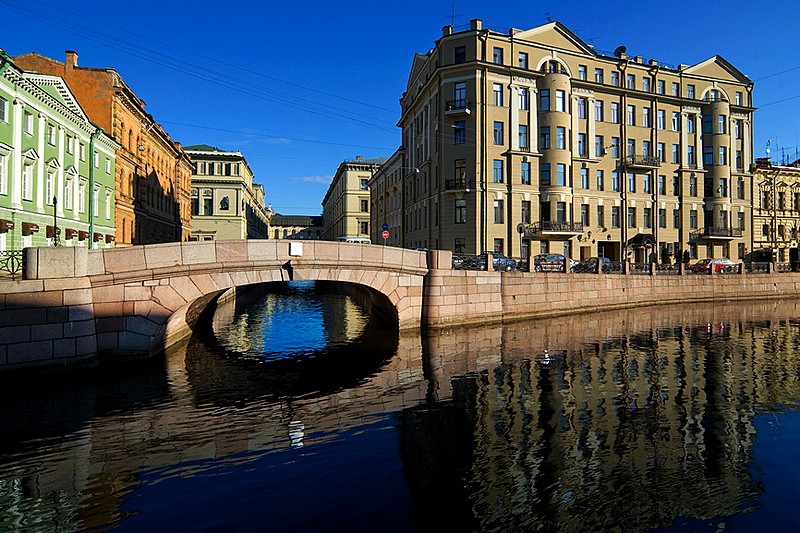
The most stunning architectural ensemble along the Moyka River is undoubtedly that surrounding St. Isaac's Square, where the river itself cannot actually be seen as it runs under the 97-meter wide Blue Bridge. The highlight of the square, St. Isaac's Cathedral, was the life's work of French architect Auguste de Montferrand, who lived from 1836 until the end of his life in house No. 86 on the Moyka Embankment.
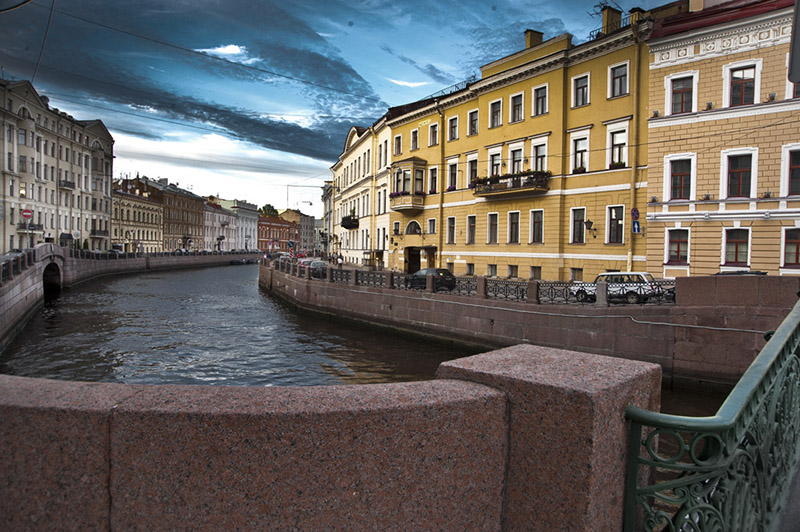
The most famous building actually on the Moyka Embankment is probably No. 94 - the Yusupov Palace, constructed in 1760 by architect Jean-Baptiste Vallin de la Mothe and rebuilt in the 1830s by Alexander Mikhailov. Although a reasonable example of early neoclassicism, it is fair to say that the palace is more famous for its sumptuous interiors, showing the vast wealth of the Yusupov family accumulated over several generations, and for the fact that on the night of December 16-17, 1916, conspirators led by Prince Felix Yusupov killed Grigory Rasputin in the basements of the palace.
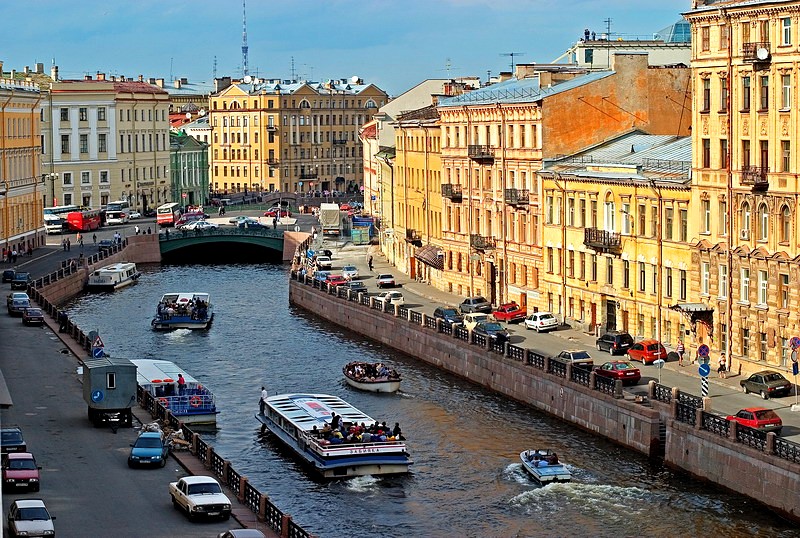
Fifteen bridges span the Moyka, many of them architectural masterpieces. The First Engineers Bridge is decorated with stylized wrought iron swords and shields with the head of the gorgon Medusa. The Blue Bridge is the widest bridge in St. Petersburg. A tradition began in the 19th century to paint the metalwork of bridges on the Moyka in different colors, so the river also has the Red and Green Bridges, although the Yellow Bridge no longer stands. Among other notable bridges are the Teatralny, Pochtamtsky and Potseluev Bridges. Beyond the Potseluev Bridge is a unique monument of industrial architecture of the 18th century, the shipyard and warehouses of New Holland (Novaya Gollandia), the most striking feature of which is the enormous red brick archway facing the Moyka, also by Vallin de la Mothe.
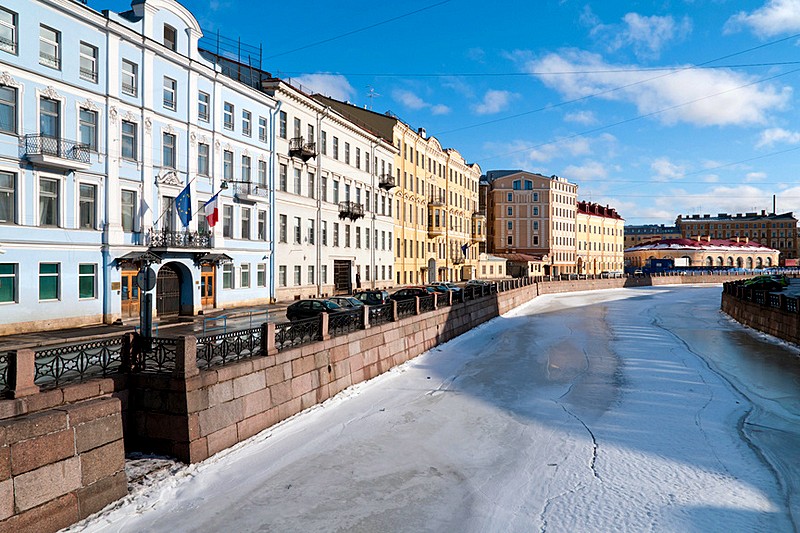
Today the Moyka River flows through the oldest part of the city, from magnificent imperial palaces to St. Petersburg's historic shipyards. With its numerous magnificent buildings and bridges, it is nearly always included in popular boat trips for tourists.
| Metro stations: | Gostiny Dvor / Nevsky Prospekt, Sennaya Ploschad / Sadovaya, Admiralteyskaya |
|---|---|
| Characteristics of the river: | Length of 4.67 km Width: up to 40 m Maximum depth: 3.2 m |
| Best walking route: | Along the entire river (about 3 hours) |
| What's here? | Round market, Court Stables, Princess Volkonskaya House (Pushkin Museum), Pevcheskaya Chapel, Pevchesky Bridge, General Staff Building, House of Merchant Kotomin (Wolf and Beranger), Stroganov Palace, Kirill Razumovsky Palace, Blue Bridge, Mariinsky Palace, St. Isaac's Square, Pochtamtsky Bridge, Yusupov Palace, Palace of Grand Duchess Ksenia Alexandrovna, House of Mikhail Lomonosov, Apartment house and mansion of Viktor Schroeder, Novaya Gollandia (New Holland), Palace of Grand Duke Alexei Alexandrovich |
| What's nearby? | Bolshaya Morskaya Ulitsa, Kryukov Canal, Voznesensky Prospekt, Gorokhovaya Ulitsa, Nevsky Prospekt, The Winter Canal, Field of Mars, Mikhailovsky Garden, Summer Garden, Mikhailovsky Palace, Palace Square, Lebyazhya Kanavka (Swan Canal), Sadovaya Ulitsa |

